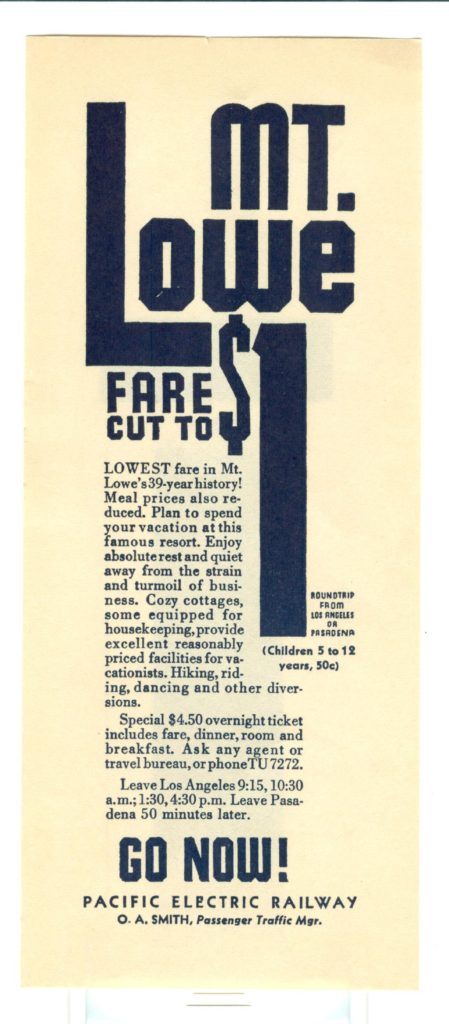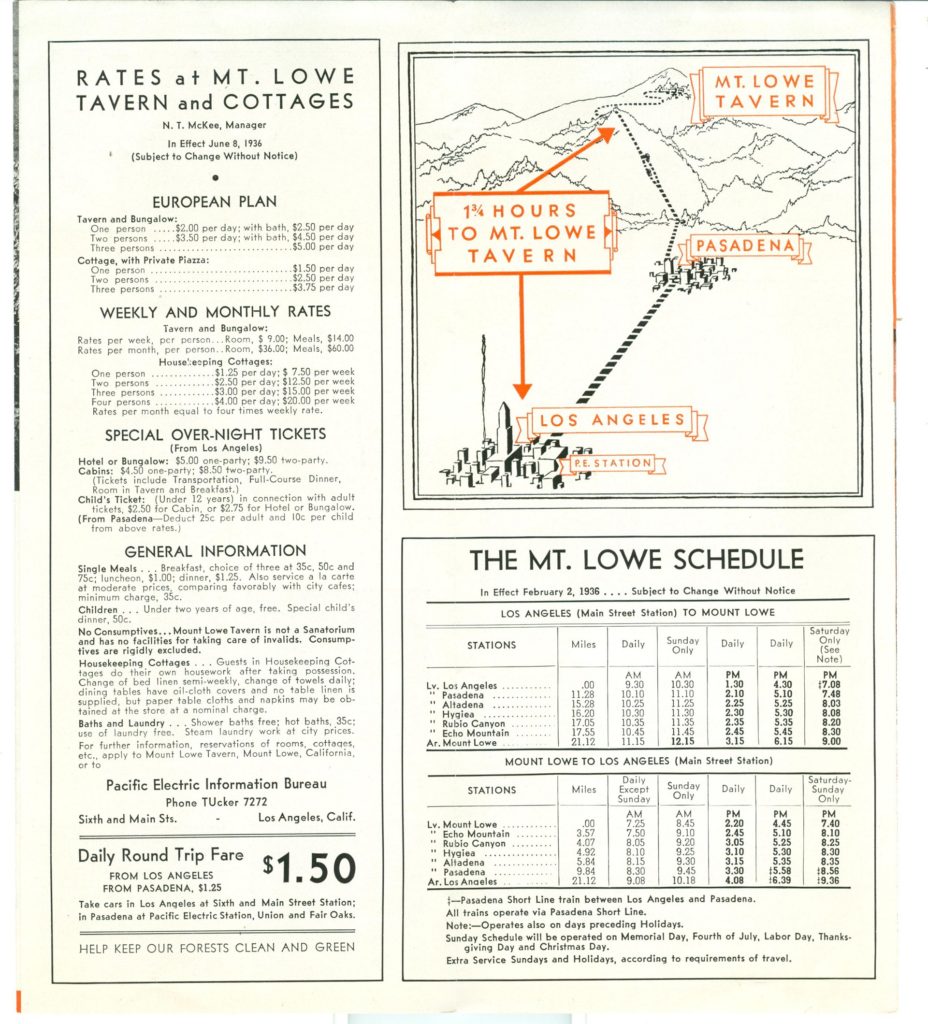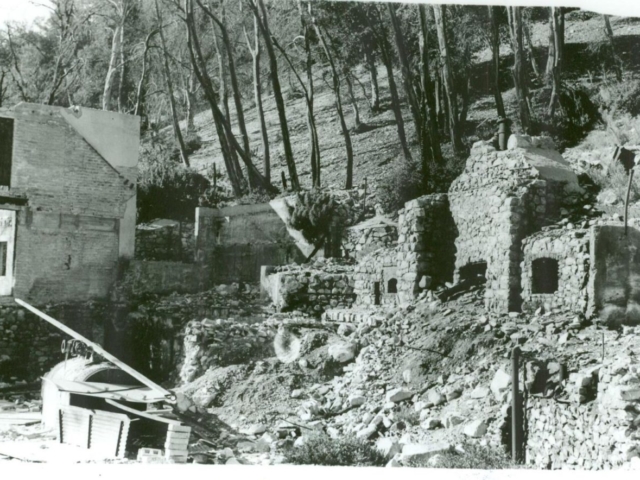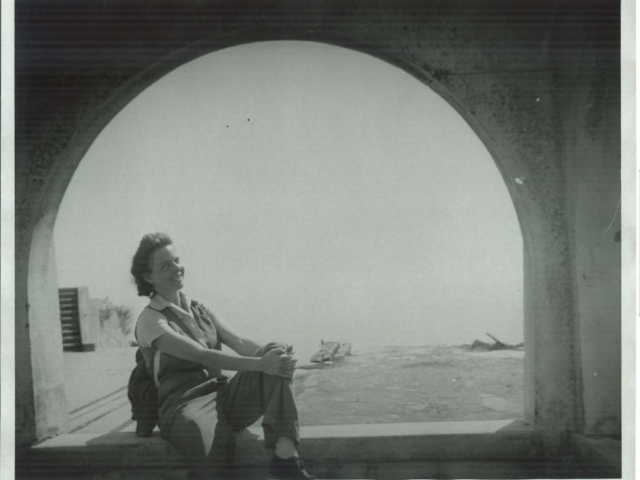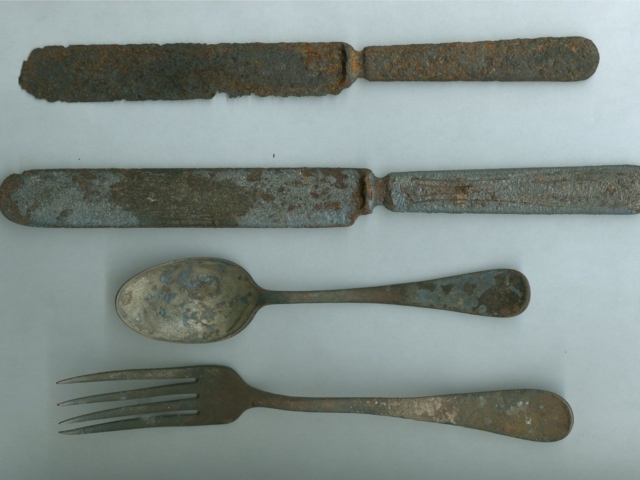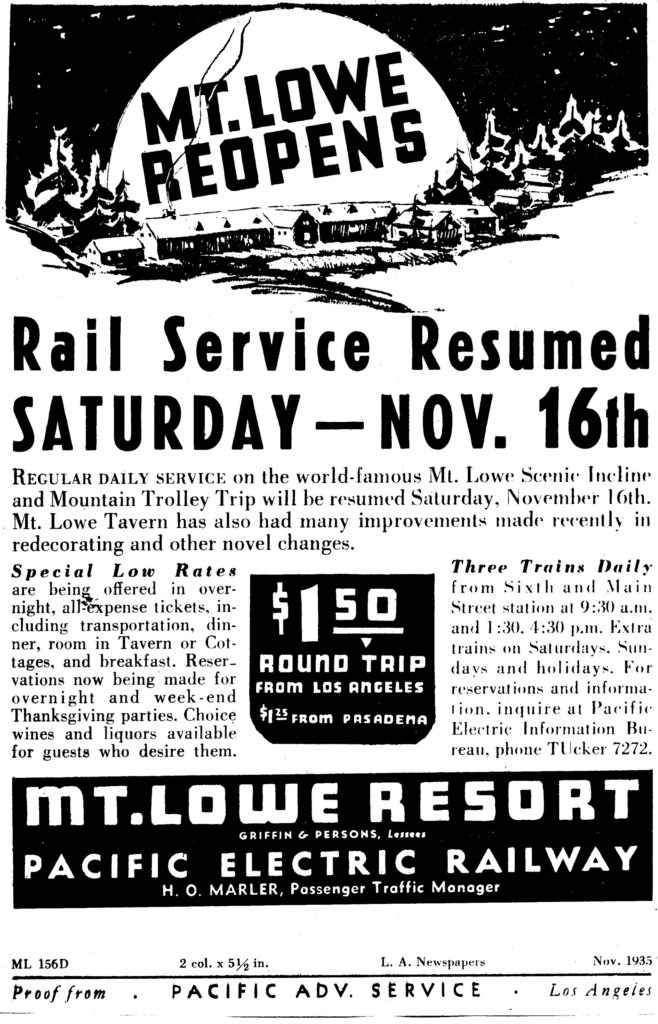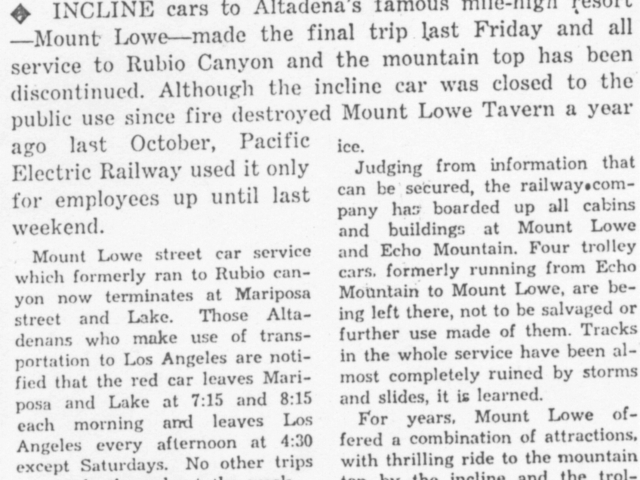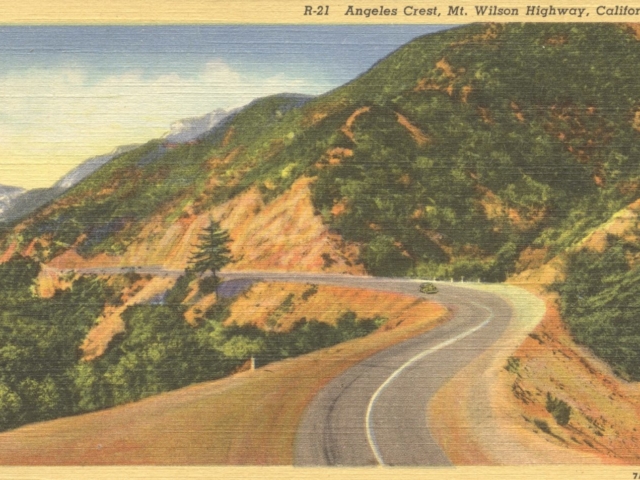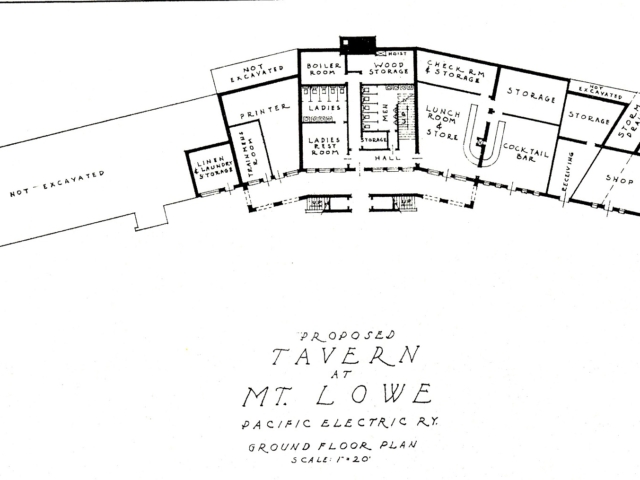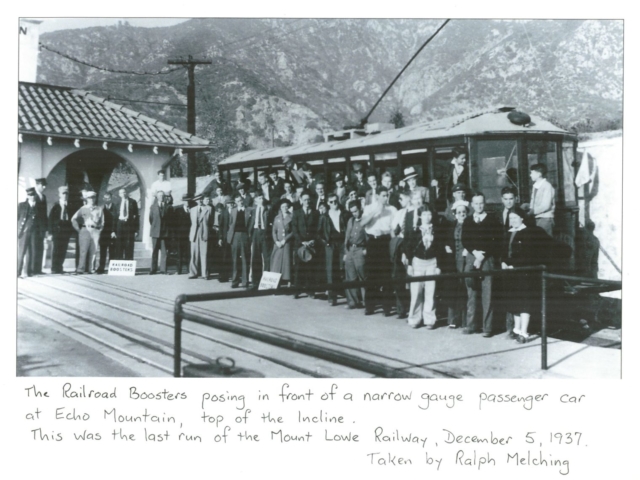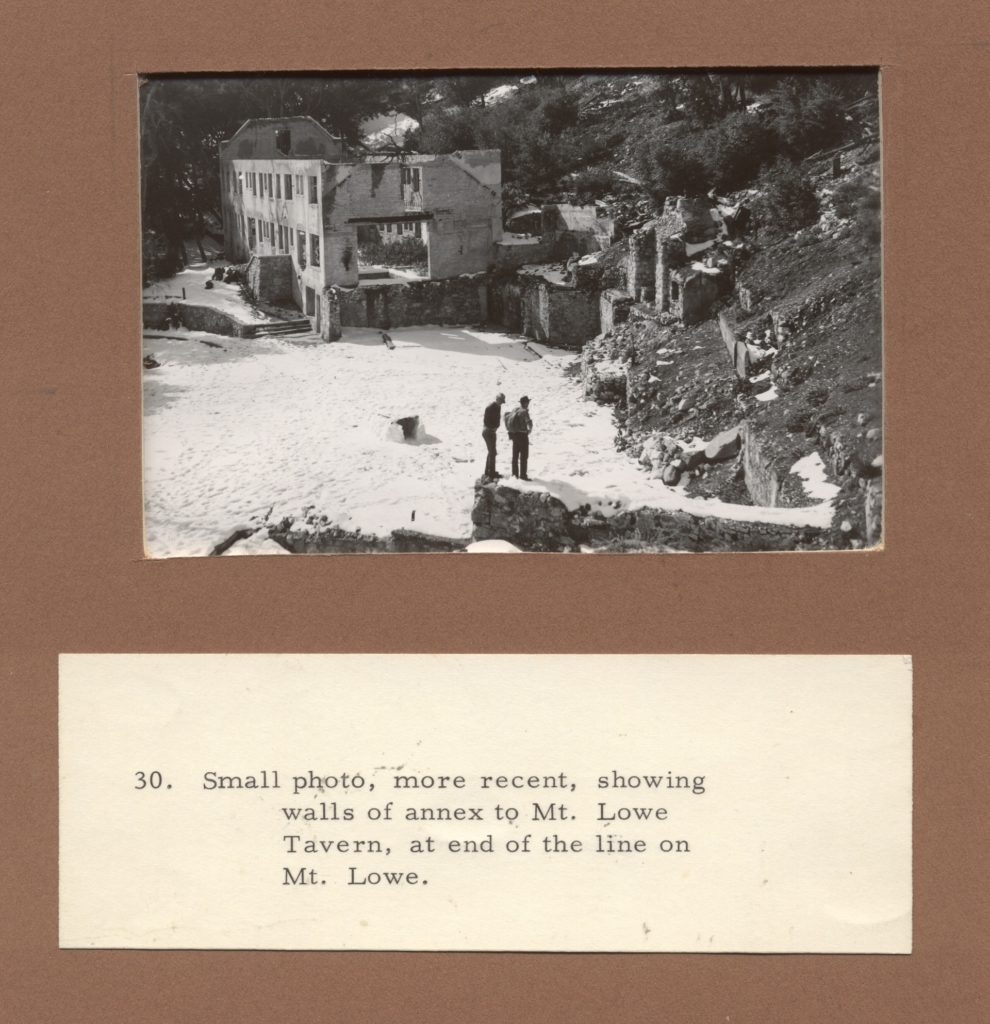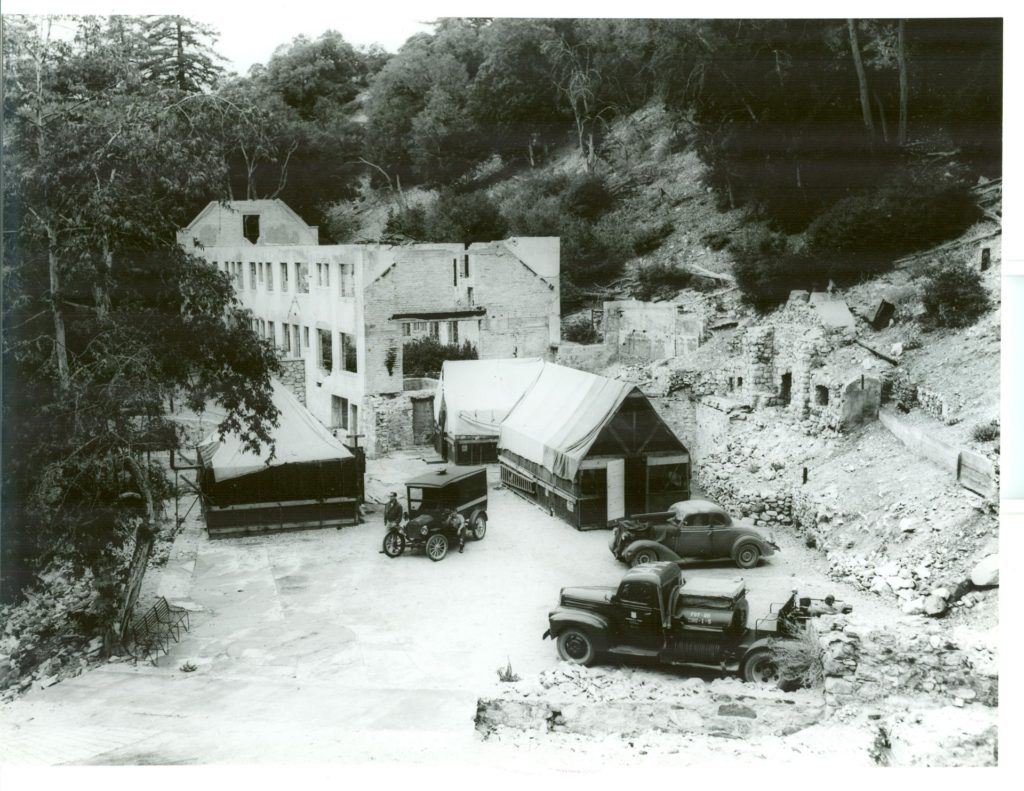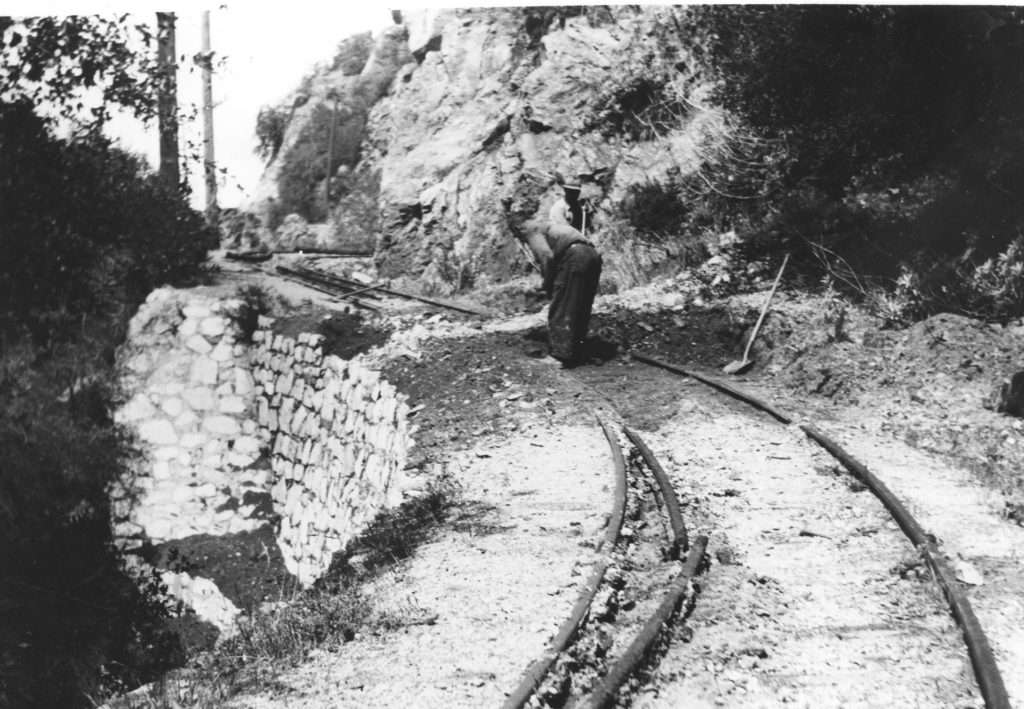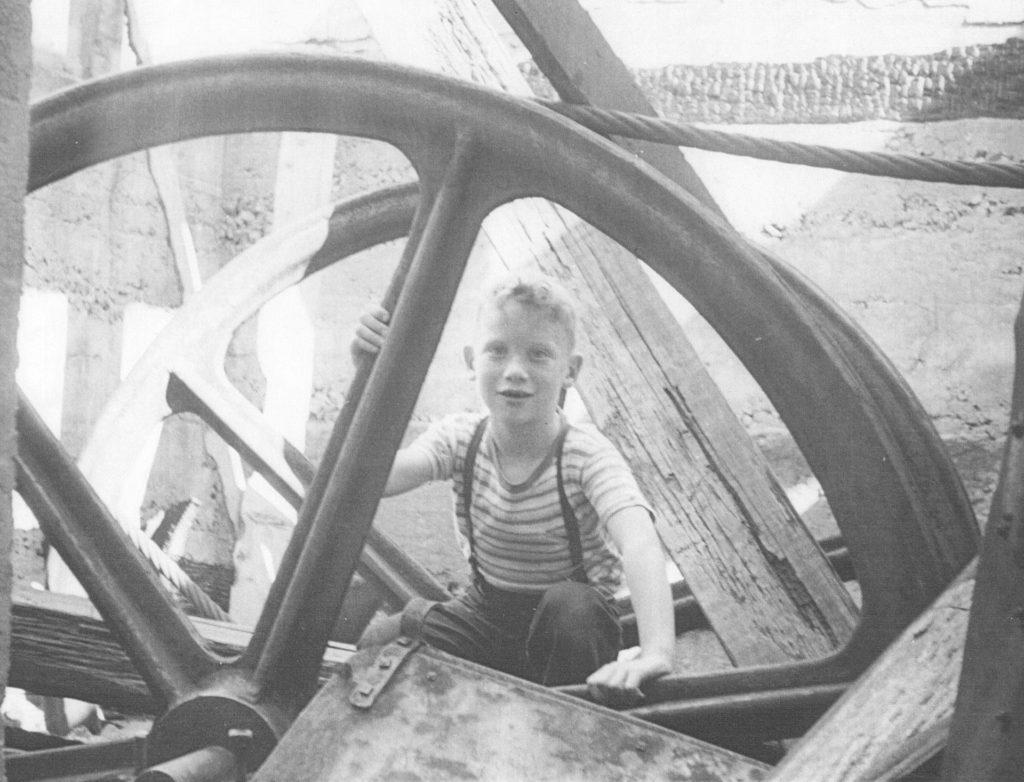Professor Lowe’s great dream was doomed to a short life. From its opening in 1893 to its final days in 1936, financial difficulties, natural disasters and the country’s economic problems brought an end to this unique railway and resort. Today, only a few remains are left for hikers, railroad buffs and history lovers to see.
Financial Difficulties
During the 1890’s, only the upper classes had the means and leisure time to travel. Mount Lowe, Southern California’s most popular tourist attraction of its time, was originally designed for those wealthy and well-to-do travelers. These travelers and Lowe himself were hard hit financially by the Panic of 1893. Tourism declined and his railway went into receivership. Lowe tried to regain control by borrowing money and selling his personal real estate, but was not successful. By 1896 the railway and resort were under the control of receiver J. Stanley Torrance, founder of the city of Torrance. Torrance attempted to increase the appeal of Mount Lowe to local residents and the less affluent by reducing fares and expanding facilities at the Alpine Tavern before selling the enterprise to investor Valentine Peyton. Peyton, in turn, sold to Henry Huntington and the Pacific Electric Railroad. The Great Depression further eroded people’s ability to afford travel and the railway operated at a loss until it closed in 1936.
Destruction
The Mount Lowe railway and resort was set amid the spectacular beauty of the San Gabriel Mountains. Unfortunately, California’s mountains were prone to forest fires, high winds, flash floods and landslides, all of which played a part in the destruction of the railway. The first disaster took place in 1900, when a fire caused by a defective fireplace flue leveled Echo Mountain House. Luckily, no one was injured. The hotel was severely underinsured and although plans were made to rebuild, they were never carried out. In 1905 the Chalet and other buildings on Echo Mountain were destroyed as fire and gale force winds swept the area. Only the observatory and the searchlight were saved. The powerhouse was rebuilt, but from then on, Echo Mountain served as a place for worker housing and a transfer station for visitors on the way to Alpine Tavern.

In 1909, Rubio Pavilion fell victim to flash floods and rock slides set off by a lightning strike on the east side of Rubio Canyon. Fred C. Drew, manager of Rubio Canyon Junction, and his family were present at the time. Their harrowing story is told in an Independent Star-News article, “The Day the Rocks Fell” (see image above).
In 1923, a fire in Rubio canyon threatened the Alpine Tavern and the remaining buildings on Echo Mountain. Over 100 tavern guests were taken safely down the mountain, while hotel workers, Forest Service personnel, firefighters, and community volunteers worked to save the tavern, along with the observatory and the powerhouse on Echo Mountain. In 1928 the observatory was lost in a windstorm, but the famed telescope survived and was relocated to Santa Clara University where it is still in use.
Despite these disasters, Mount Lowe Railway continued to carry visitors to the Alpine Tavern and neighboring attractions, with a brief interruption when the MacPherson Trestle burned in 1935. It was replaced at a cost of $15,000. But the end was near. In September of 1936, an electrical kitchen fire destroyed Alpine Tavern and the surrounding cabins. Hotel staff helped save the five guests present that evening, but lost their own possessions. Pacific Electric, Forest Service and California Conservation Corps crews had to haul water up from Echo Mountain to fight the fire and the estimated losses totaled between $200,000 and $250,000.
In 1938, all service to and from Echo Mountain and Mount Lowe Tavern was discontinued and the railway abandoned. According to a Herald Express article printed in 1959, “Three years after the fire on September 15, 1936,…torrential downpours flooded the area. Trestles and timber plunged to the canyon floor. Tumbling with them came any hopes of rebuilding the Southland’s top tourist attraction for almost half a century.” By the end of the decade, local tourists had begun to visit the mountains in their cars, using the new Angeles Crest Highway and other mountain roads. Consequently, the Pacific Electric Company decided against rebuilding Alpine Tavern.
Final Days
Pacific Electric salvaged some of Mount Lowe’s railway and buildings to sell for scrap. Vandals set fire to Mount Echo’s powerhouse and destroyed the searchlight. No trace of the searchlight remains today. In 1947, Pacific Electric sold the area and its ruins to the federal government to become part of the Angeles National Forest. For a time, the ruins of the tavern and cabins were used as fire camps and temporary housing by Forest Service fire crews. Eventually the Forest Service designated the ruins as attractive nuisances that could prove dangerous to the hundreds of hikers who came to see what remained. In 1959, demolition experts blew up the tavern with 1.5 tons of explosives, leaving only one partial wall standing, and in 1962, what remained of the powerhouse on Echo Mountain was dynamited as well.

